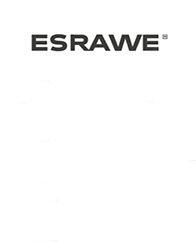
Esrawe Studio是一個(gè)位于墨西哥城的跨專業(yè)的設(shè)計(jì)工作室,其目標(biāo)是為酒吧、餐廳、酒店、辦公室、住宅和商業(yè)空間開發(fā)家具和室內(nèi)設(shè)計(jì)方案。
Esrawe Studio is a cross-disciplinary design office located in Mexico City, whose aim is to develop furniture and interior design solutions for bars, restaurants, hotels, offices, houses and commercial spaces.
該團(tuán)隊(duì)由經(jīng)驗(yàn)豐富的設(shè)計(jì)師、建筑師、產(chǎn)品工程師和IT工程師,以及制造專家組成,他們的主要目標(biāo)是確保工作室的每一個(gè)產(chǎn)品,從概念化到生產(chǎn)的最后階段都能采用最佳工藝。工作室的創(chuàng)意屬性是顯而易見的,并且凸顯在每一個(gè)過程中;設(shè)計(jì)的每一流程都在逐步完善,保證為客戶提供最新的設(shè)計(jì)概念和定制家具。
The team is comprised of experienced designers, architects, production engineers and IT engineers, as well as a team of manufacturing specialists whose main goal is to assure that every one of the studio’s products is optimally crafted—from conceptualization to the finishing stages. The presence of the studio’s creative essence is evident throughout the entire process; a process perfected each and every day so as to offer new concepts and custom-made furniture pieces.
在Esrawe工作室,設(shè)計(jì)是一個(gè)生動的對話過程,將客戶與周圍的環(huán)境聯(lián)系起來。這一切都是為了在特定的背景下理解某一特定時(shí)刻的基本生理和情感需求,從而去感受設(shè)計(jì)的進(jìn)化。
At Esrawe Studio, design is a living process of dialogue, linking the users with their surroundings. It’s all about feeling the evolution of design, which stems from an understanding of basic physical and emotional needs of a given moment, and in a given context.
編譯:Molghost
設(shè)計(jì):Esrawe Studio
設(shè)計(jì)團(tuán)隊(duì):HéctorEsrawe, JavierGarcía-Rivera, MaríaSantibá?ez, Aloisio Guerrero, Alessandro Sperdutti, Daniela Pulido, Federico Stefanovich
如果說起墨西哥城最好的餐廳,作為美食地標(biāo)的El Califa會無疑當(dāng)選,這不僅僅是因?yàn)樵摬蛷d使用的高品質(zhì)的原料,更是因?yàn)槠淞己玫姆?wù)意識和舒適的用餐環(huán)境。在2017年,El Califa進(jìn)行了品牌擴(kuò)張,并在墨西哥城最繁華街道之一的起義者大道(Avenida de los Insurgentes)開設(shè)了一家新店面。
El Califa is already a gastronomic reference if we talk about the best “taquerías” in Mexico City, not only for the quality of its ingredients but also for its service and atmosphere. In 2017, the brand started an expansion process and opened a new restaurant in one of the busiest streets in the city, Avenida de los Insurgentes.
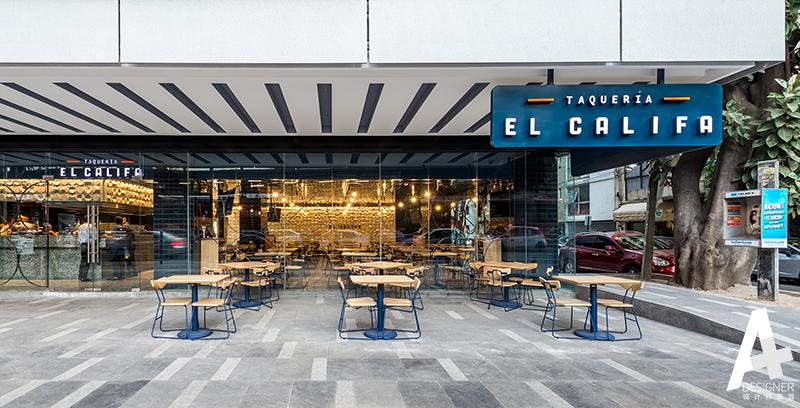

在這個(gè)餐廳新址,El Califa確立了品牌發(fā)展方向,并推出了全新的室內(nèi)設(shè)計(jì)和餐飲風(fēng)格。Esrawe Studio的設(shè)計(jì)靈感來自墨西哥美食玉米餅,并在其圓形的基礎(chǔ)上進(jìn)行幾何變換,如重疊、切割和變形等等。自前西班牙時(shí)代以來,玉米餅就一直是當(dāng)?shù)厝松钪蟹浅V匾囊徊糠郑鞲绲淖嫦仍谑秤糜衩罪灥耐瑫r(shí)甚至也會將其當(dāng)作餐具進(jìn)行使用。而今天,每個(gè)人都找到了用玉米餅滿足自己的獨(dú)特方式,依據(jù)個(gè)人的喜好進(jìn)行選料和卷制,在拿取的方式上也有著自己的思考。
At this new location, El Califa establishes the guidelines for its evolution as a brand, revealing a new interior design and identity.
Esrawe Studio found its source of inspiration in the tortilla and its geometric translation to the circle, as well as in its repetition, partition and variants. The tortilla has been an important part of people’s lives in Mexico since pre-hispanic times, when our ancestors used corn tortillas as a dish, food and spoon. Today everyone finds ingenious ways to use it, creating a personal touch in the way of preparing, folding and holding a taco.
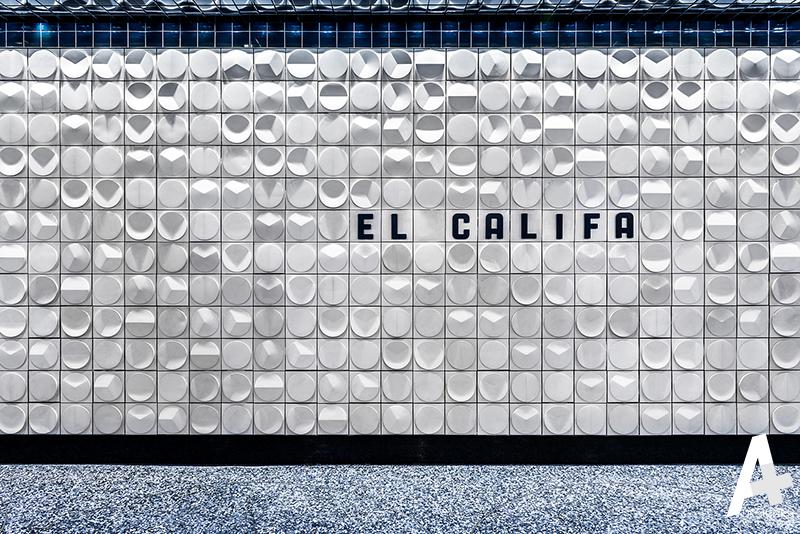
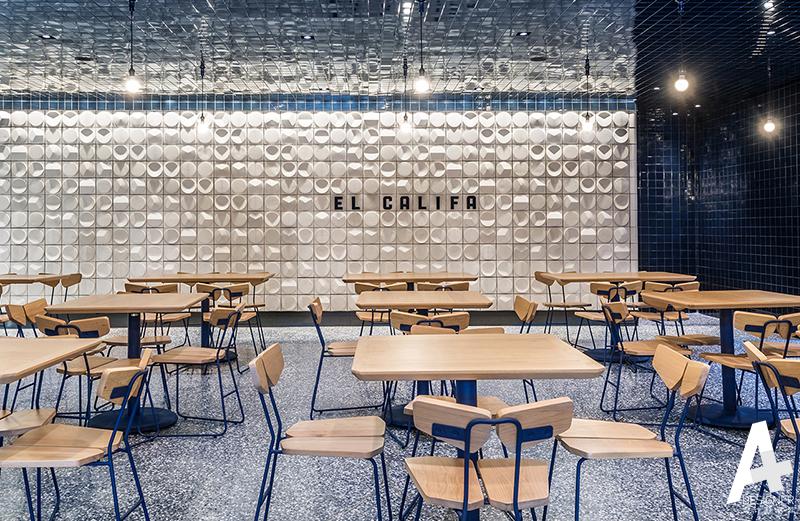
從所有玉米餅的不同卷法中,設(shè)計(jì)團(tuán)隊(duì)萌生了一個(gè)新的概念,并用以重新闡釋墨西哥傳統(tǒng)餐廳的精神。
From all the different ways of folding a tortilla we generate a new concept to reinterpret the essence of traditional “taquerías” in Mexico.
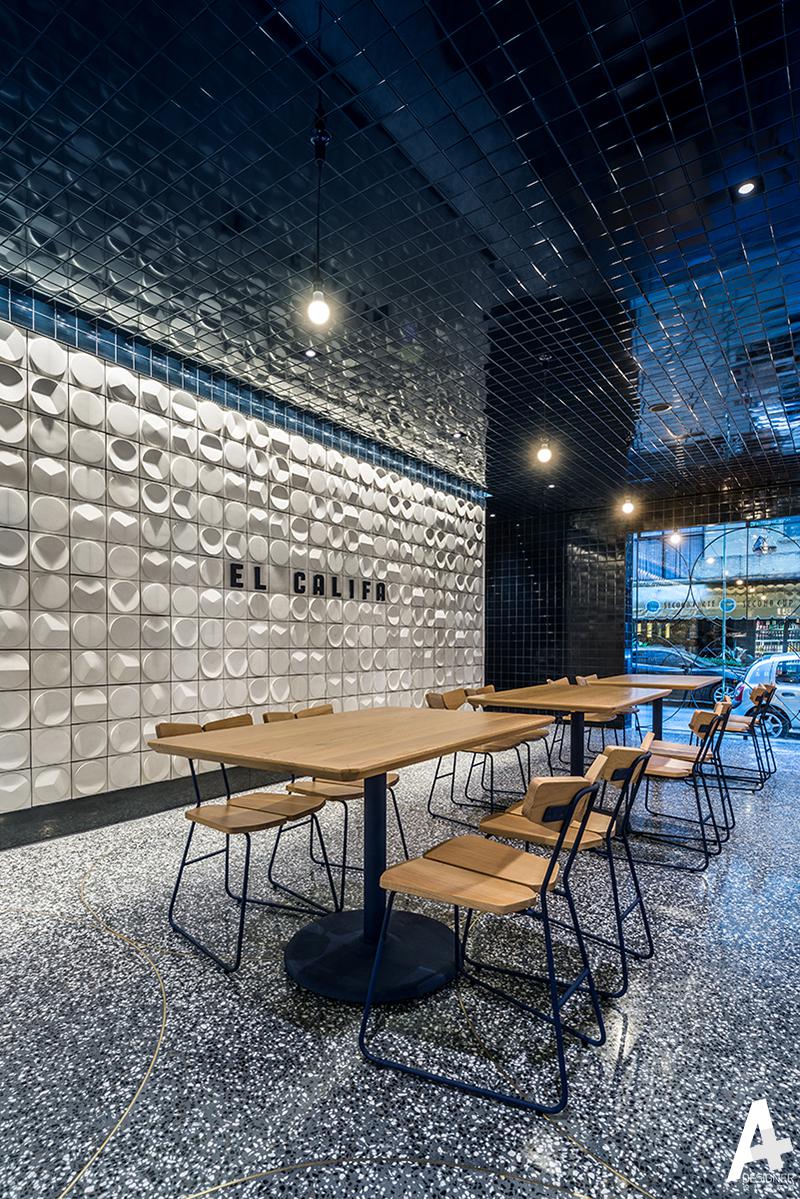
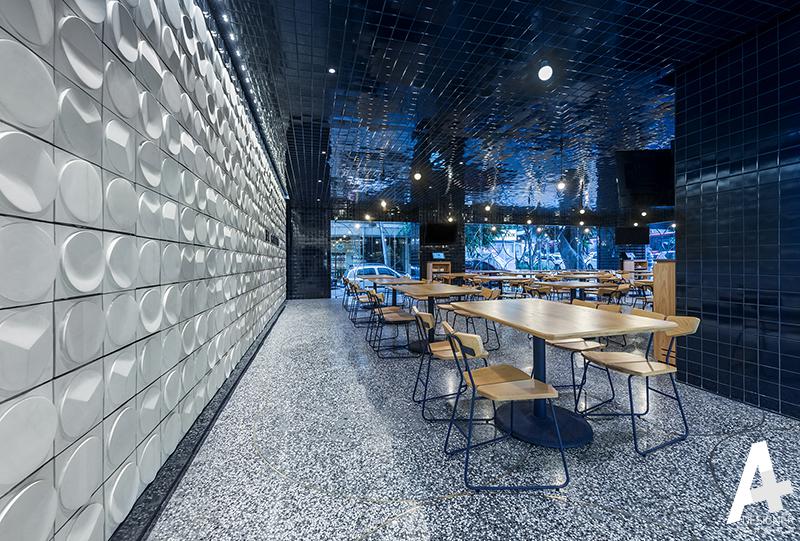
品牌 The Identity
設(shè)計(jì)團(tuán)隊(duì)制定的品牌表達(dá)是直觀而明確的,延續(xù)了El Califa崇尚自由的理念,通過全新的藝術(shù)形式去強(qiáng)化視覺體驗(yàn),傳達(dá)出其自然而然的屬性。對于土生土長的墨西哥人而言,“rótulos”的廣告形式一直伴隨他們的成長,這種蘊(yùn)含著豐富藝術(shù)文化內(nèi)涵的傳統(tǒng)表達(dá)方式也影響到了他們的飲食文化,喚起了人們對隨意又真實(shí)的當(dāng)?shù)孛朗车南蛲TO(shè)計(jì)團(tuán)隊(duì)也正是從“rótulos” 的圖案中找到了靈感,并創(chuàng)造出一個(gè)全新的符號,構(gòu)成了El Califa現(xiàn)在的標(biāo)志性名稱。這些圖形元素巧妙而有趣地出現(xiàn)在餐廳的桌布上,以一種抽象又玩味的方式呈現(xiàn)出來,凸顯出El Califa的餐廳環(huán)境和美味菜品的城市影響力。
The language of the brand is intuitive and obvious. We maintain the carefree spirit of the brand, and empower it through the new graphics so that El Califa can convey an essence that has been formed naturally through time. As Mexicans, we have grown up surrounded by the graphic and cultural richness of “rótulos”, a kind of traditional ads in Mexico, which evoke the casual, honest and inclusive spirit of urban food. It was in the “rótulos” that we found inspiration to create the new proportions and expression of the characters that form the iconic name of El Califa. The graphic elements, subtly playful and translated in an abstract yet flirtatious way from the tablecloths found in “taquerías”, respond to the urban and popular context within which El Califa and its cuisine are protagonists.
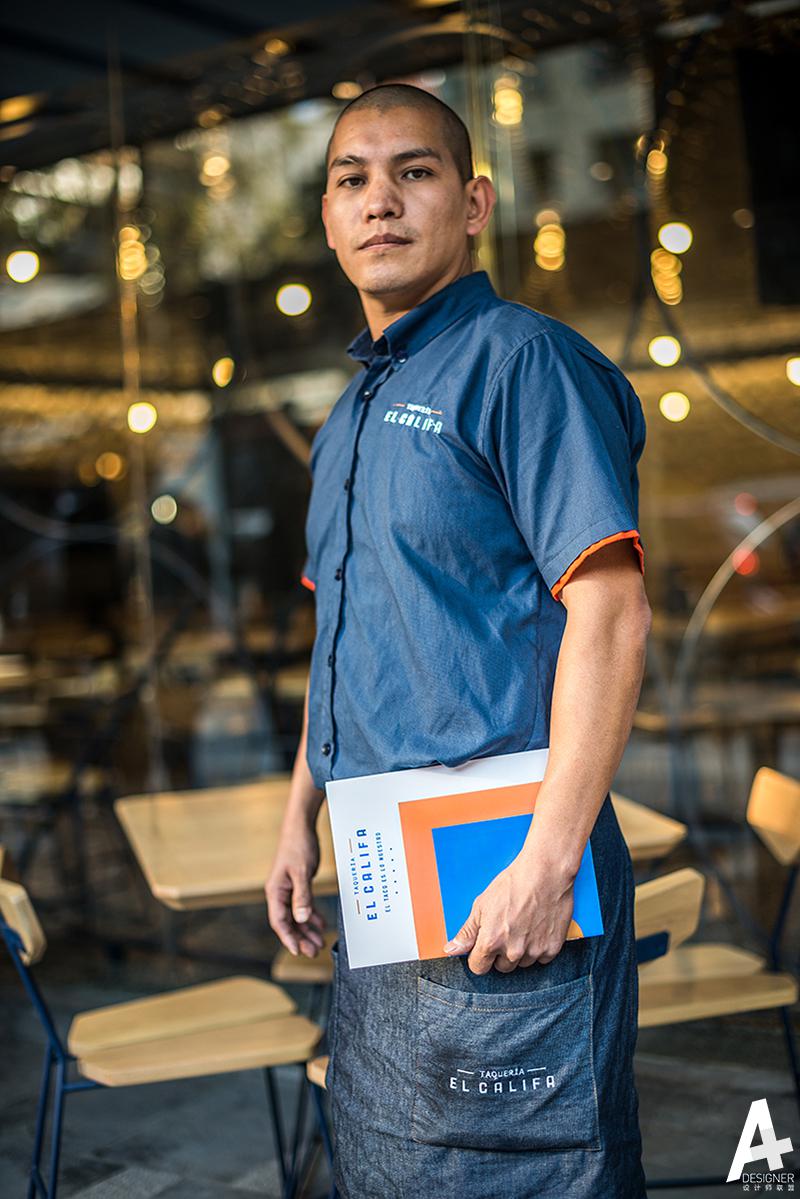
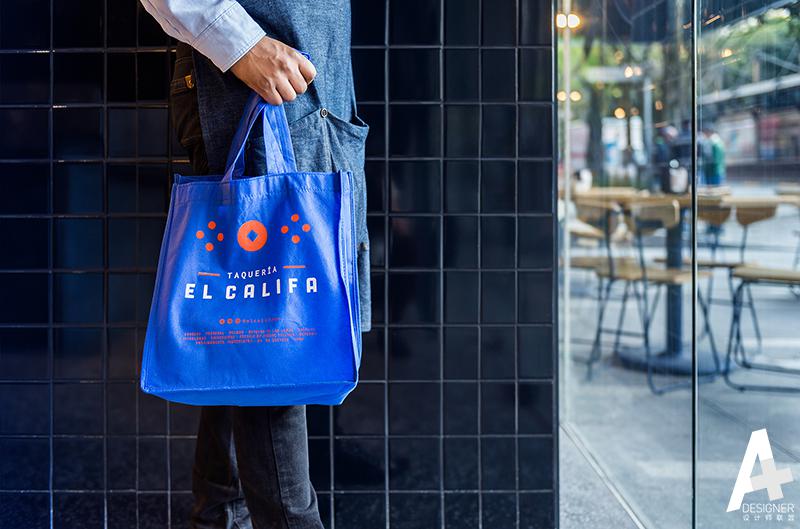
空間 The Space
設(shè)計(jì)團(tuán)隊(duì)選用了開放式廚房,讓玉米餅的制作方式更具視覺影響力,同時(shí)也更接近墨西哥傳統(tǒng)的“玉米餅小餐吧”。 這種處理方式也在餐廳環(huán)境和玉米餅之間建立了一種聯(lián)系,彰顯出廚房的重要性,也喚起了人們內(nèi)心對食物的敬意。在餐廳空間里,設(shè)計(jì)師運(yùn)用充滿變化的玉米餅的形象重新詮釋了馬賽克裝飾,并用當(dāng)代的表現(xiàn)手法讓其成為了El Califa的標(biāo)志性元素。
By means of an open kitchen we enhance the preparation of the tacos, and at the same time we bring the diner closer to the traditional "taco bar". This gesture generates a link between the commensal, the “taquero” and the tacos, and dignifies the kitchen, causing a certain kind of admiration towards the preparation of dishes. The traditional mosaic in “taquerías” is reinterpreted in the space to generate a contemporary expression that becomes the identifying element of El Califa. This mosaic speaks ingeniously through a game of volumes of one of the most basic elements in our Mexican cuisine: the tortilla.
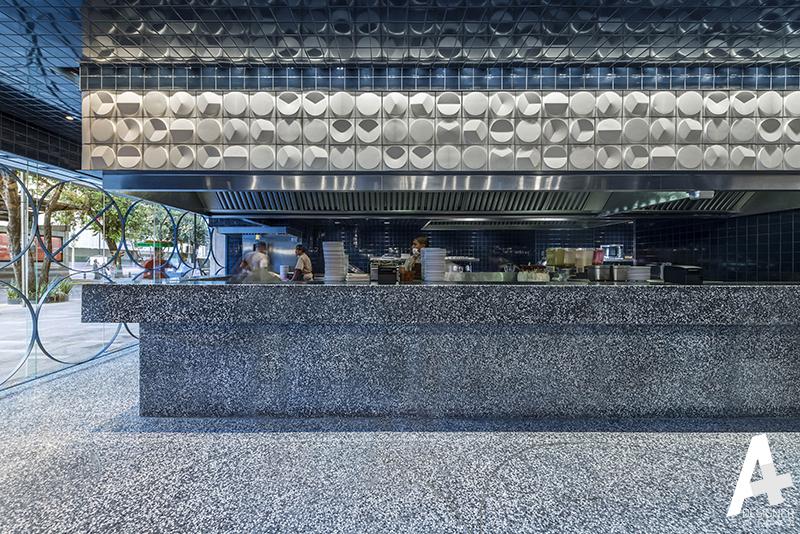
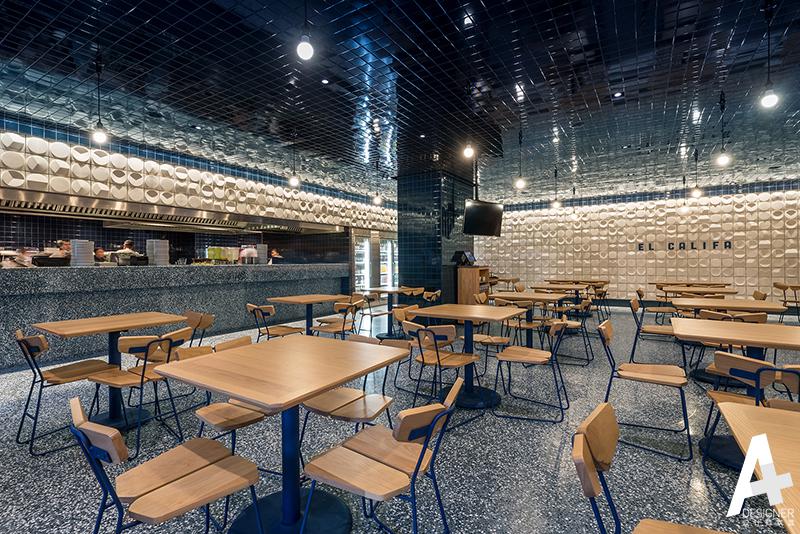
超大的網(wǎng)格狀金色圓圈裝飾配合水磨石的地面,與馬賽克的簡易美學(xué)形成鮮明的對比。同時(shí),定制燈具投射的溫暖光線營造出了輕松溫馨的用餐氛圍。 餐廳的家具和餐具都是專門定制的,通過這樣的方式能讓室內(nèi)設(shè)計(jì)與品牌理念更有效地結(jié)合在一起,加強(qiáng)餐廳的個(gè)性特征。
In contrast with the simple aesthetic of the mosaic, the floor is covered by the urban feeling of the terrazo embellished with an XXL grid of golden circles. Finally, the atmosphere is submerged by the warm light coming from custom bulbs that evoke the effortless atmosphere of “taquerías”. The furniture and tableware of the restaurant were developed especially for the project. This allowed us to follow the formal line that originated the interior design and brand identity, strengthening its discourse.
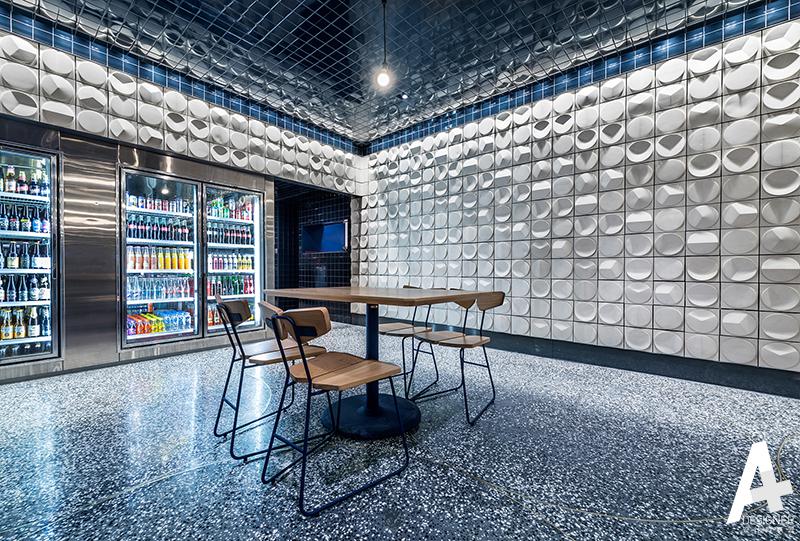
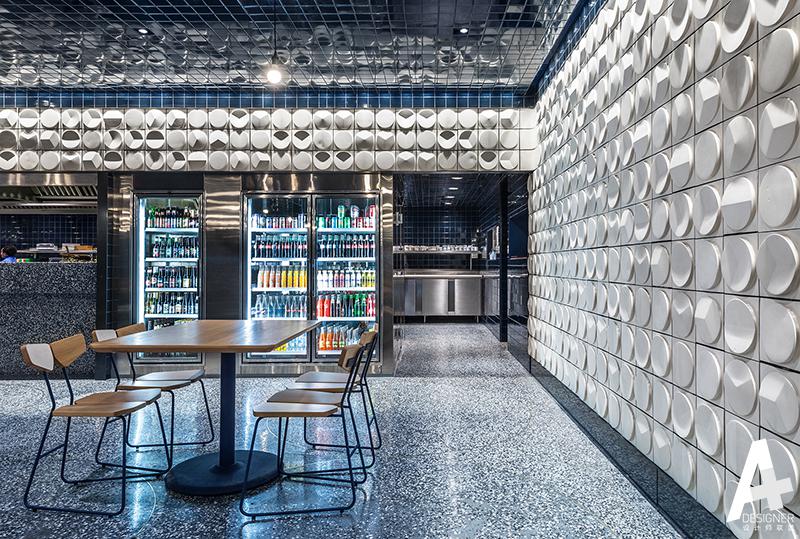
無論是墨西哥的街頭小攤還是精致餐廳,人們在制作玉米餅時(shí)總是喜歡采取幾何折疊的方式,所以設(shè)計(jì)師也將這種折疊中的褶皺運(yùn)用到了設(shè)計(jì)中并覆蓋在餐廳的外墻,用網(wǎng)格結(jié)構(gòu)呈現(xiàn)出了餐廳和城市之間的過渡。
Insisting on the geometric representation of the folds of the tortilla when making a taco and starting from the expression of the forges found in the streets of Mexico, an exterior skin was added to the fa?ade, a latticework that functions as a transition between the restaurant and the city.
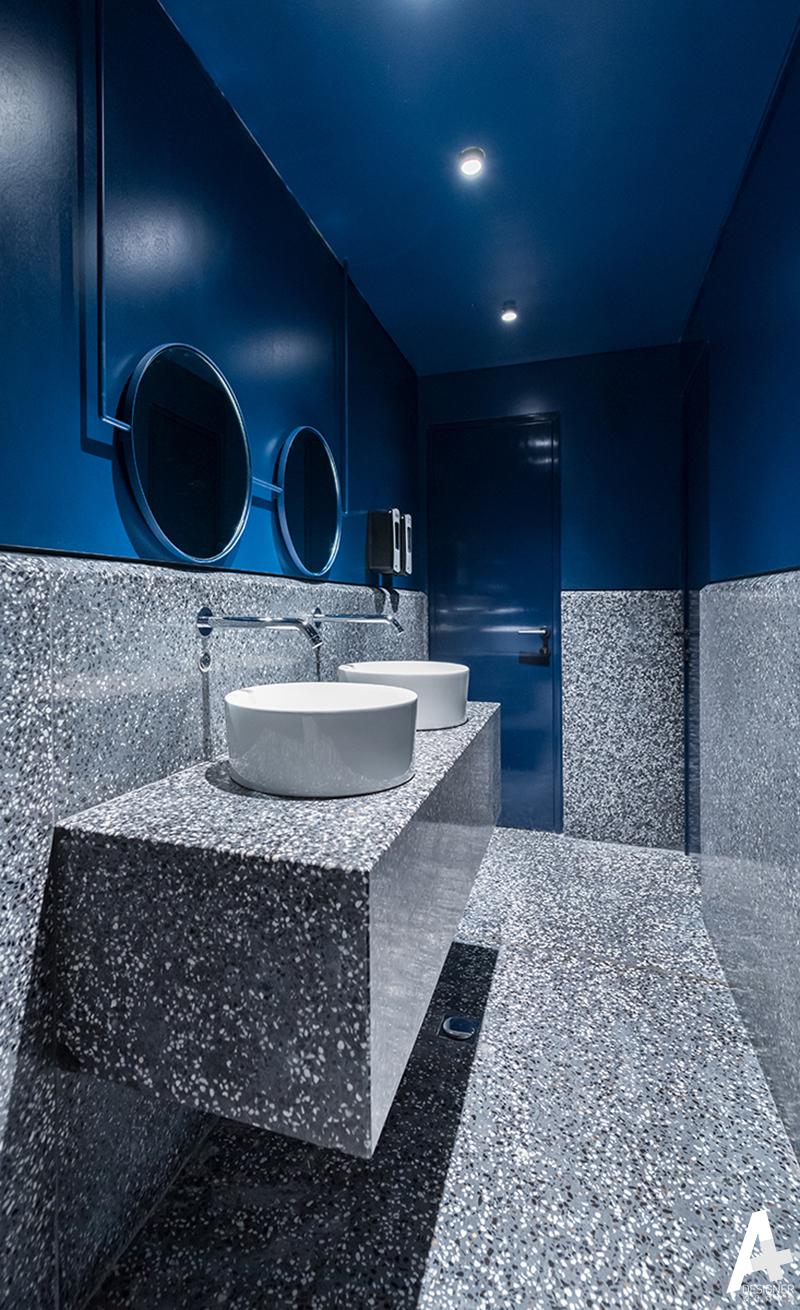
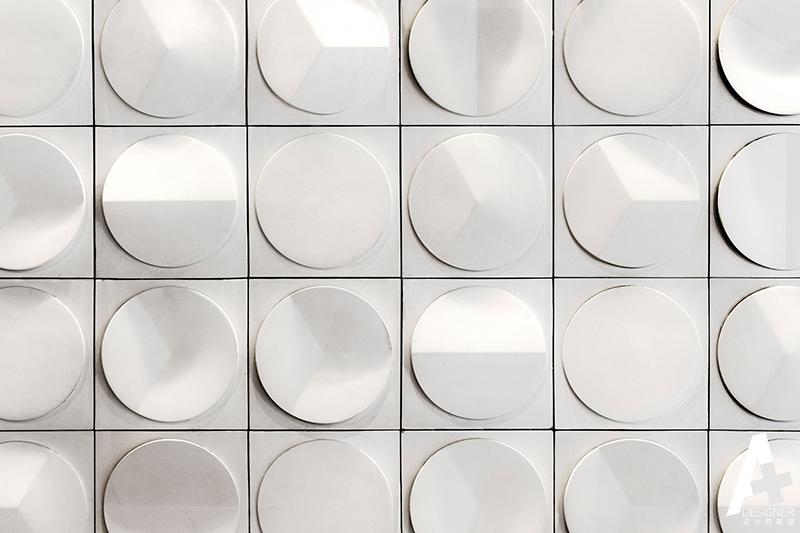
項(xiàng)目名稱 / Project:El Califa
設(shè)計(jì)公司 / Studio:Esrawe Studio
設(shè)計(jì)團(tuán)隊(duì) / Team:HéctorEsrawe,JavierGarcía-Rivera,MaríaSantibá?ez,Aloisio Guerrero,Alessandro Sperdutti,Daniela Pulido,F(xiàn)ederico Stefanovich
建筑配合 / Builder:DIYCSA
燈光配合 / Lighting:Luz en Arquitectura
項(xiàng)目攝影 / Photographer:Camila Cossio
建筑面積 / Built Area:240㎡
完工時(shí)間 / Time of Completion:2018
項(xiàng)目地址 / Address:墨西哥 Mexico City
熱點(diǎn)閱讀:
